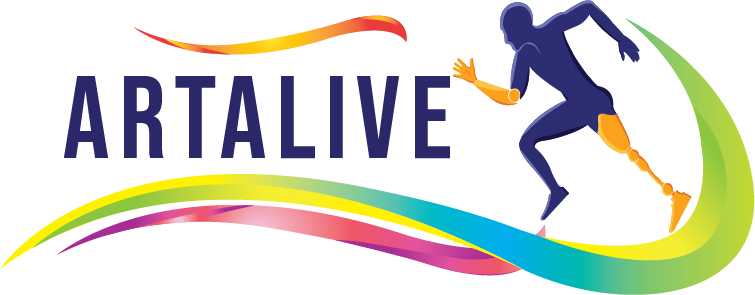The exercises and stretches in this handout will help to prepare you to wear a prosthesis properly. The positioning instructions and exercises in this program are designed to help you:
• Regain full motion at your hip and knee
• Decrease stiffness
• Strengthen specific muscles to make sitting more comfortable and make you better able to transfer and use a prosthesis
• Increase your endurance for everyday activities
Important positioning Do’s and Don’ts:
Remove the pillow from underneath your residual limb by noon on the day after surgery and do not put it back. Placing a pillow under your residual limb puts your hip and knee in flexion. This means it is bent and can limit normal movement. It is very important that you are able to get your hip and knee straight with your thigh flat on the bed. Each section will review their specific positioning do’s and don’ts, followed by exercises.
1: Lying on your back
• Do keep your residual limb flat so that your hip and knee are straight.
• Do keep your legs close together.
• Do lie on a firm bed or couch.
• Do not put a pillow under your residual limb
• Do not put pillows between your thighs.
• Do not cross your legs
• Do not let your residual limb hang over the edge of the bed or couch.
Exercise 1: Gluteal Sets- Squeeze your buttocks together. Hold for 5-10 seconds. Relax. Repeat.
Exercise 2: Quad Sets- Tighten the muscle in front of your thigh by pushing your knee down to the bed. Hold for 5-10 seconds. Relax. Repeat.
Exercise 3: Hip Extension- Pull your non-operative leg up to your chest with your hands. Push your residual limb down into the bed. Hold for 5-10 seconds. Relax. Repeat.
Exercise 4: Bridging— Bend your non-operative leg and place the bottom of your foot flat on the bed. Tighten your buttocks while lifting your hips off the bed. Work up to holding for 5-10 seconds. Relax. Repeat.
Exercise 5: Hip Adduction– Place a towel roll between your thighs. Squeeze the towel roll, keeping your legs flat on the bed. Hold for 5-10 seconds. Relax. Repeat.
Exercise 6: Hip Abduction– Slide your residual limb out to the side as far as possible, keeping your knee pointing to the ceiling. Return to the middle. Relax. Repeat.
Exercise 7: Straight Leg Raise—Bend your non-operative leg and place the bottom of your foot flat on the bed. Tighten the thigh of the residual limb and slowly lift the residual limb towards the ceiling. Slowly lower the residual limb. Don’t lift your leg higher than the bent knee. Relax. Repeat.
Exercise 8: Hip abduction—Lie on your non-operative side. Lift your residual limb straight up, keeping your residual limb straight in line with your hip. Relax. Repeat.
Exercise 9: Hip extension—Lie on your non-operative side. Bring your residual limb to your chest while bending the knee. Move the residual limb backward as far as possible while straightening the knee. Relax. Repeat.
2: Lying on your stomach:
• Do lie on your stomach on a firm bed at least 30 minutes twice a day
• Do keep both hips flat against the bed, completely straight
• Do keep your legs close together
• Do try to sleep on your stomach at night
• Don’t put pillows under your stomach or hips
• Don’t put pillows between your thighs
Exercise 10: Hip extension— Keep your hips flat on the bed. Lift your residual limb up toward the ceiling, keeping your knee straight. Pause at the top. Relax. Repeat.
Exercise 11: Knee Flexion— Keep your hips flat on the bed. Bend the knee of your residual limb as far as possible. Relax until your knee is completely straight. Relax. Repeat.
3: Sitting
• Do sit on a firm chair or couch
• Do sit up straight with your weight equally distributed onto your hips
• Do keep your thighs close together
• Do get up from the sitting position, at least hourly to stand or walk
• Don’t let your residual limb move out to the side away from your other leg
Exercise 12: Knee Extension / Flexion— Straighten the knee of your residual limb completely. Hold for 5-10 seconds. Bend the residual limb as far as possible. Relax. Repeat.
Exercise 13: Chair Push-Ups— Place hands on the armrests of the chair. Press down and lift your body by straightening your arms. Avoid pushing through your foot, it should be resting on the floor for balance. Hold for a count of 5 seconds. Slowly, lower yourself into the chair. Relax. Repeat.
4: Standing
• Do try to stand up or walk at least once every waking hour
• Do hold your residual limb pointing to the floor when walking, with your hip straight
• Don’t hold your residual limb in front of you or out to the side when walking
• Don’t rest residual limb on walker or crutches
Balance:
When you have a below-knee amputation you lose your balance. That means when you move and stand, your center of gravity has shifted. This may make you feel off-balance until you get used to your new center of gravity. When you are first transferring, standing, and walking you will be provided assistance. The more you move, stand, and walk, the sooner you will learn your new center of gravity and feel balanced again.
Contact Info:
Visit us: https://artalive.com.my/
No 16, Persiaran 65C, Pekeliling Business Centre, Off Jalan Pahang Barat, 53000 Kuala Lumpur, Malaysia
E-Mail: info@artalive.com.my
Contact: +60 3-4032 4273
Author: Artalive
